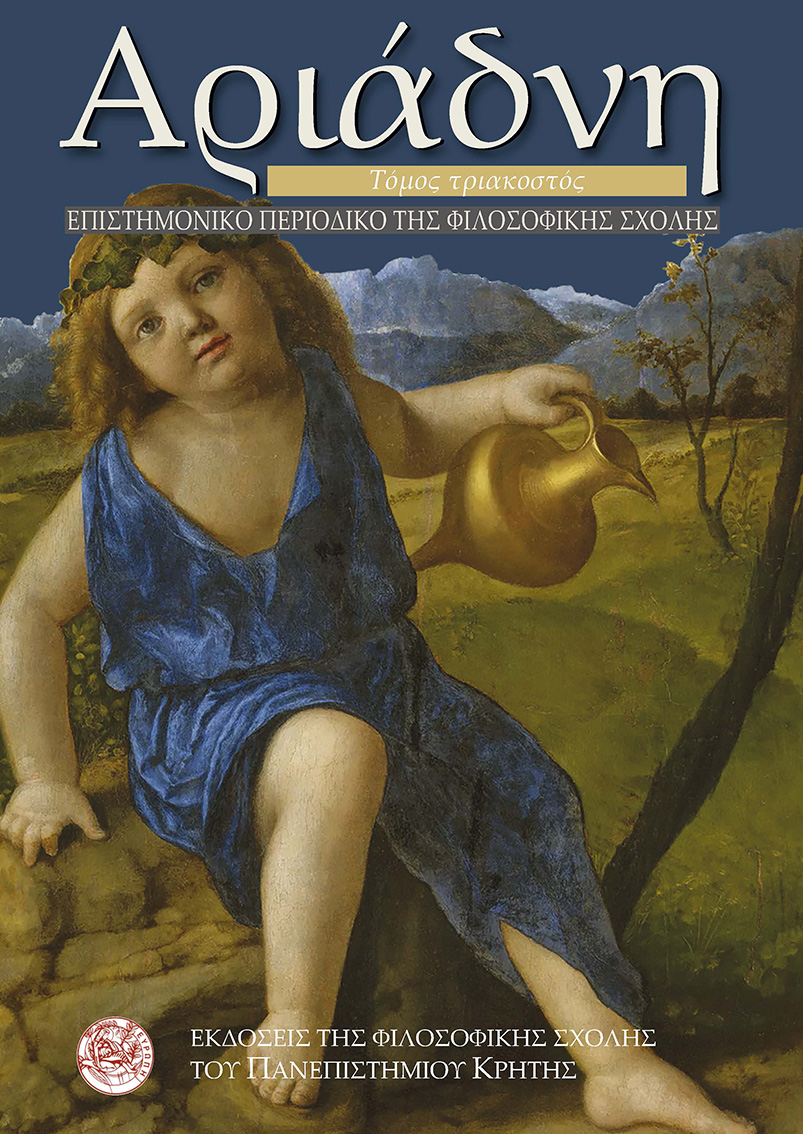Yannis Ritsos, “Heracles and us”: Tracing its Source (Richepin – Theocritus, Id. 24) and a New Perspective on its Reading
DOI:
https://doi.org/10.26248/ariadne.v30i.1894Abstract
This article focuses on the poem by Ritsos “Heracles and us”. The aim is to trace the source of this poem and then to propose a new perspective for its reading. More specifically, it is argued, on the one hand, that the first part of the poem (vv. 1–7) develops an intertextual dialogue with Idyll 24 of Theocritus and in particular with verses 105–118. On the other hand, it is argued that Ritsos found the translation of these verses in J. Richepin’s Greek Mythology (translated by N. Tetenes), which he had with him while he was in exile. Subsequently, the analysis shows, among other things, that “Heracles and us” is a poem of the poetry written by internally displaced poets. In particular, it is argued that Ritsos is not content merely to draw phrases from the quoted translation of Theocritus’ Idyll, but with his own additions and modifications demystifies Heracles or, more precisely, those who ‘hide’ behind his mask; these are certain contemporary poets of Ritsos who, despite their rich intellectual backgrounds, establish themselves in the literary scene with complicated verbal constructions, which create, of course, an ‘elaborate’ style (like that of Xenophon), but conceal from the reader the absence of meaning from the verses; on the contrary, the poets that politically persecuted –like Thucydides of ancient historiography– have no need of expressive ornaments and therefore write ‘bare’ verses, which, however, have more to say than those of the modern ‘Heracleides’ of poetry.
Downloads
Published
How to Cite
Issue
Section
License

This work is licensed under a Creative Commons Attribution-NonCommercial-ShareAlike 4.0 International License.
Authors retain copyright and grant the journal right of first publication with the work simultaneously licensed under a Creative Commons Attribution-NonCommercial-ShareAlike 4.0 International License that allows others free use of the work for non-commercial purposes as long as the author/s and the journal are attributed properly and the new creations are licensed under identical terms (Creative Commons Attribution-NonCommercial-ShareAlike 4.0 International License).


